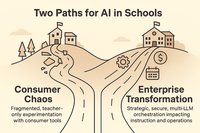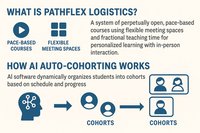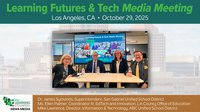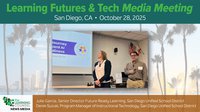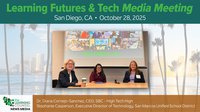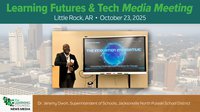Expected growth and assessment are part of all successful teaching plans. The general expectation is that for every year in school, students will accumulate a year’s worth of new knowledge, but how do we successfully assess students, especially when they’re learning online? And when we take the time to measure, should we focus on growth or achievement?
Achievement: A Snapshot in Time
Evaluating student achievement requires looking through the lens of content and standards students must learn during a particular year of school. Progress is measured against state grade-level standards and gives a snapshot of a moment when a student took a standardized test. Although information is gained, does it accurately represent students’ accomplishments and struggles?
Meeting with content-area teachers on campus and poring over benchmarks that give indications of students being ‘less than proficient’, although insightful, don’t necessarily give the best picture of student growth. These moment-in-time assessments don’t record student test anxiety or capture the creativity of the tester stifled by the careful filling in of dots.
With the deletion of standardized tests this year for millions of students, the question becomes more relevant than ever: How do we accurately assess student learning?
Capturing Growth: Taking a Deeper Look
Measuring growth does not require a rubric of standardized testing expectations or a student-to-student comparison but rather focuses on individual student gains made over time.
The benefits of capturing growth include:
- Student-Centered Assessments
Monitoring student growth allows flexibility in accessing that year-over-year measure we are always trying to obtain. Since this type of progress does not require state-mandated ‘musts’ in the testing process, teachers are able to recognize and use the strengths of their students to measure progress.
A class debate, an individual or group project, or a portfolio provide teachers with insight into student knowledge and growth. Rather than complete a one-size-fits-all test, students can show teachers their thinking and progress through carefully planned growth monitoring assignments.
- Depth of Knowledge Testing
Growth assessment allows teachers to dig in and add depth to assessments. Students must be able to think critically and apply concepts learned in school to real life when they become adults. Ideals of collaboration, diversity, and grit are concepts students need to experience in school but are often not a part of standards-focused teaching.
Growth-minded performance goes beyond the mastery of standards type questions that reflect unfairly on students and the teacher’s ability to teach and instead asks students to apply their knowledge and skills to demonstrate their knowledge. For example, answering a thought question in Achieve3000 Literacy gives students the opportunity to reflect and use what they have learned to share their own values and experiences. This also allows for a clearer picture of successes and struggles so that teaching can be adjusted for the benefit of learners.
- Achieving Boundless Growth (OR) Promoting Boundless Growth
Students can think through processes and come up with a product made from grit and real understanding whether they are receiving instruction inside or outside the classroom. The dependence on onsite learning is removed as teachers experience the freedom of being student- and growth-focused rather than classroom-focused.
The idea that learning takes place in the classroom needs to be expanded so that students understand learning takes place everywhere. Take students outside, to the gym, put them in breakout rooms online, or have them meet as a group remotely or at another location to learn.
Peer review, hands-on projects, and self-reflection should happen beyond the school walls. Instill this in your students, so their growth mindset continues beyond their school years.
It’s About the Students
As you navigate through the new school year, think about ways to capture student growth. How can you teach the growth mindset to your students in a way they will value as adults? Let’s teach students about the value of making gains, not meeting expectations and the benefit of true understanding, not memorization.
Life is not a multiple-choice test; let’s teach students to grow.
As our students grow and learn so will we. Teachers modeling real-life growth is invaluable.
Keep going and keep growing. Your students need you.
About the author
Janis Effner is the professional services director at McGraw Hill. She was a classroom teacher and reading specialist for over 10 years and is an international author. Janis is a powerful media and communication professional with a Principal Certification focused on Secondary School Administration/Principalship from Schreiner University. She lives in the beautiful state of Alaska.


